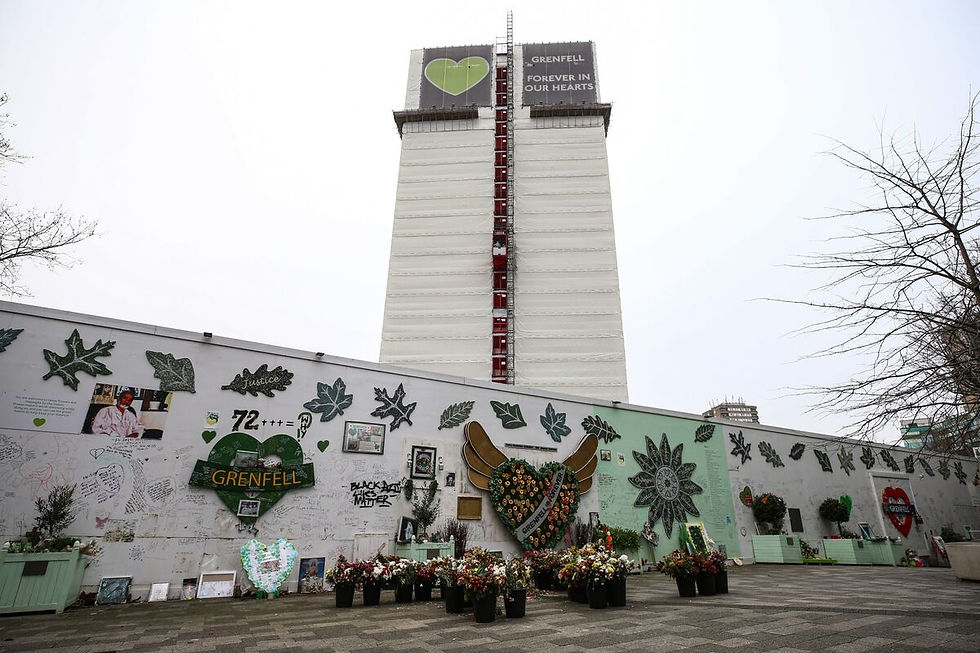WR-AP Book Club - “Show me the Bodies – How we let Grenfell Happen”
- WR-AP
- Apr 17, 2023
- 3 min read
Updated: Dec 18, 2023
Over the Easter break I finally had the time to read the book that all UK architects should read if you’re working in the housing sector in the UK, Peter Apps’ book “Show me the Bodies – How we let Grenfell Happen”. And if you weren’t already awake to the seriousness of the issues affecting our industry than this book certainly sheds a startling light on all that’s bad about it and what needs to be fixed.

The book provides a comprehensive account of the Grenfell Tower disaster that took place on June 14, 2017, in London. The author, a journalist with extensive experience covering conflicts draws upon his journalistic skills to provide a detailed and engaging narrative of the tragedy. The book explores the history of the Grenfell Tower, its construction, the refurbishment project, the public inquiry and the events leading up to the catastrophic fire that claimed the lives of 72 people. In this review, I will provide an overview of the book and offer my opinion on the lessons that can be learned from it for UK architects working in the residential sector.
One of the strengths of the book is the way it contextualizes the tragedy within the broader social and political landscape of the UK. Apps examines the socio-economic factors that contributed to the disaster, including the neglect of social housing, austerity measures, and the marginalization of immigrant and minority communities. He also provides a detailed account of the Grenfell residents' experiences, many of whom were immigrants or people of colour, and who had long raised concerns about the safety of the building. It seems that nobody really listened to them.
The author also explores the response of the authorities, including the emergency services, the local council, and the government. He highlights the systemic failures that led to the disaster, including the inadequacy of fire safety measures and the lack of effective communication between the various stakeholders involved.

One of the strengths of the book is its extensive use of interviews and personal accounts, which provide a vivid and emotional account of the human cost of the tragedy. The author gives voice to the victims and survivors of the disaster, highlighting their struggles and ongoing trauma.
The book can be overwhelming at times, with so many different threads to the story that it can be difficult to keep track of everything. However, this is a reflection of the complexity of the Grenfell disaster itself, rather than a fault of the author.
So, what lessons can be learned from the Grenfell disaster for UK architects working in the residential sector? Clearly a major outcome from the disaster has been the changes in the regulations that govern building design with amendments to Building Regulations Part B and the introduction of the Buildings Safety Act in 2022. Legislation is now clear that it is essential to prioritize safety above all else. Architects must design buildings with robust fire safety measures in place and ensure that these measures are rigorously maintained over time. This means being extra vigilant about the use of materials and building methods that may compromise safety. Never has it been more important for practices to have robust quality assurance processes in place.
Secondly, architects must be aware of the social and economic context in which their buildings are constructed. The Grenfell disaster highlighted the need for architects to be mindful of the social and economic conditions that affect the communities they serve. Architects must take a holistic approach to design, considering not just the physical environment but also the social and economic factors that shape it. At WR-AP this is something we have embedded within our practices principles since our formation.
Thirdly, architects must prioritize effective communication and collaboration with all stakeholders involved in a project, including the residents and local authorities. The Grenfell disaster exposed the inadequacy of communication between the various stakeholders involved, leading to a breakdown in trust and accountability. Architects have the key skills to undertake this on large regeneration projects and its time we took up the mantle and started to lead the discussions once again.
Overall, “Show me the Bodies – How we let Grenfell Happen” is an important and engaging account of one of the UK’s most significant disasters in recent years. The author’s journalistic skills and extensive research provide a comprehensive and emotive narrative that highlights the human cost of the tragedy. UK architects working in the residential sector can learn important lessons from the Grenfell disaster, including the need to prioritize safety, be mindful of the social and economic context of their projects, and prioritize effective communication and collaboration with all stakeholders involved.


This blog post has been written by Sean, one of the directors here at WR-AP . Sean's desire to work in an industry that could help people and society in a small way led him to pursue a career in architecture. You can read more about Sean here.



Comments